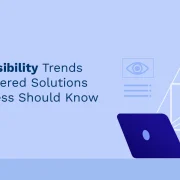
Principles of Change Management
Summary
The blog post discusses key principles of change management for successful organizational transitions. It emphasizes the importance of effective communication, stakeholder engagement, and fostering a culture of adaptability. The post highlights the significance of clear goals, comprehensive planning, and continuous evaluation to navigate and implement change successfully.
Change management and transformation are time-tested strategies to improve an organization’s processes, systems, and service quality. They have been an integral part of world-class businesses since the mid-2000s and are partly driven by the fast-changing business landscape, customer demands, new markets, and innovative technologies.
However, change management and transformation are easier said than done. Organizations implementing change often face resistance. They also need to tackle cost overrun seriously. A survey of senior executives found that only 54 percent of all significant change management initiatives become successful. Furthermore, the expenses often shoot through the roof when change management deviates from the original plan, leading to lost opportunities, wasted resources, and reduced employee motivation levels.
Hence, understanding the principles of change management is essential. The following sections offer a comprehensive guide to change management and transformation to help you understand the best way to introduce change management in your organization.
Table of Contents:
What is Change Management?
Change management is a set of structured processes through which an organization implements changes to transform its internal and external systems. It usually starts with employee training, where employees are sensitized about the impending changes. It’s crucial to gain their confidence while devising a change management plan, as the greatest resistance is usually encountered at the employee level.
After employee sensitization, the organization plans for the changes. After the planning stage, it implements the changes and monitors the change management plan to ensure a seamless transition. It is wise to stay agile to minimize resistance and reduce the chances of cost overruns.
Change management is a stupendous task and needs proper planning, which is why you need to be aware of the principles of change management. In a big organization, changes can be implemented on multiple independent levels or as a whole. Whatever the purpose, framing a time-tested strategy is crucial for achieving the desired change management objectives.
Also Read: How to Train Your Employees for Change Management?
What are the Principles of Change Management?
“Principles of change management” refers to the overarching guidelines that manage change, transformation, transition, and disruptions in an organization. Change management is an umbrella term for all types of internal changes, such as changing the software, rearranging project teams, etc., and external changes, such as penetrating new markets, acclimatizing to industry trends, neutralizing threats, etc.
The following are the best practices top organizations rely on to make their organizations future-ready:
1. Recognize, Understand, and Respect Change
Before implementing a solid change management plan, it’s essential to recognize and understand change so that your employees respect the change management plan. Here are the things you need to answer:
- Why are you planning to implement a change?
- What are your primary objectives?
- How will the change management plan benefit you? Consider aspects like operational, financial, brand value, and other benefits.
- What will be the effect of the change management plan on your customers?
- What effect will the plan have on your employees? Will it increase their productivity or burden them with more work? Remember, if your employees feel overburdened, the attrition rate might increase.
- What will happen if the change management plan fails?
According to experts, a change management plan can be deemed highly impactful and successful when nearly everyone in the organization is unhappy with the existing process of doing things. However, it can also be successful if you show your employees that the USP of the plan is provocative.
2. Create a Change Strategy Plan
One of the most important change management principles is to create a strategy that withstands the test of time. It takes a while to frame a proper change management plan. You need to evaluate the impact of the plan on your employees and finances and factor in regulatory approvals if needed. However, creating a plan should be easy if you know the right way.
Firstly, you need to decide whether your change management plan should be rigid or flexible. While a rigid change management strategy might suit larger organizations, progressive organizations generally rely on flexible plans. Companies following a flexible plan look at their employees’ performance to modify the plans as needed.
Secondly, decide who will support and sponsor the change. At this stage, you evaluate financial implications and finalize the roles and responsibilities of people managing the change. Sometimes, you may need to hire outside resources if you cannot find internal resources.
Thirdly, project a clear picture of your organization after executing the change management strategy. Align it with the goals of the principles of change management and let all the stakeholders associated with the goals.
3. Implement Change
According to the principles of change management, implementing change comes after understanding change and creating a strategy. At this stage, it’s crucial to instill a sense of ownership and urgency among everyone involved. Moreover, you need to address everyone’s issues carefully since change management often leads to shock and denial.
The first step is training. Proper training ensures that everyone is on the same wavelength. Design the key evaluation metrics early since it will give your employees an accurate idea of what they will achieve.
Another mandatory step is to appoint one or more change agents who will oversee the implementation and ensure strict adherence to the principles of change management.
4. Communicate Change Effectively
Strict adherence to the principles of change management is only possible with proper communication. It can make or break your change management plan. A wise way to achieve the desired impact is by linking the plan to your company’s vision and mission. When employees relate the change with the company’s larger goals, they become active participants rather than passive observers.
The ADKAR Change Management Model outlines the top things you must include in your communication strategy:
- Awareness – Everybody understands why the change is needed
- Desire – The willingness to participate in the change
- Knowledge – Everyone knows how the change will happen
- Ability – Everyone participates collectively to enforce the change
- Reinforcement – All stakeholders continue staying on track for change.
Also Read: What Is The Need For Training Management System For Your Business
5. Stay Aligned with the Company’s Culture
All progressive and innovative companies understand that a sudden deviation from the normal course of work might do more harm than good. For example, if you’re in higher education, it’s wise not to suddenly close the higher education division and move into school education. Perhaps a better approach would be to scale down or restructure the higher education segment and make gentle inroads into school education.
The key here is not to make too drastic changes and involve all stakeholders. Once everyone becomes a stakeholder in the change management initiative, realizing the full potential of the principles of change management becomes as easy as ABC.
Conclusion
Now that you know about the principles of change management, you must be looking for a convenient way to implement your change management plan. HurixDigital lets you identify the need for change and offers a perfect training platform to implement all the changes, transformations, and transitions needed to make your organization future-ready.
Get in touch with us today to know more.






